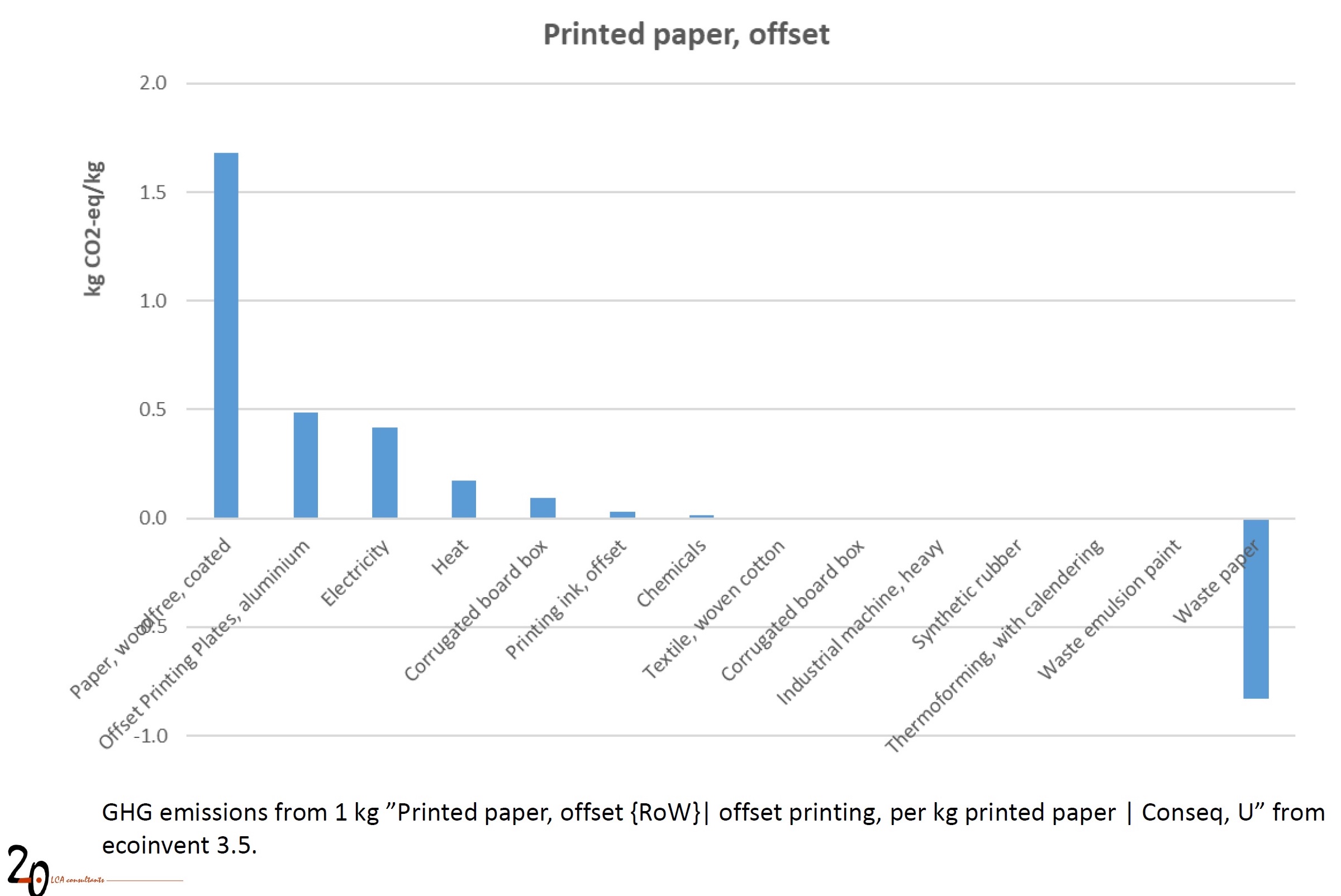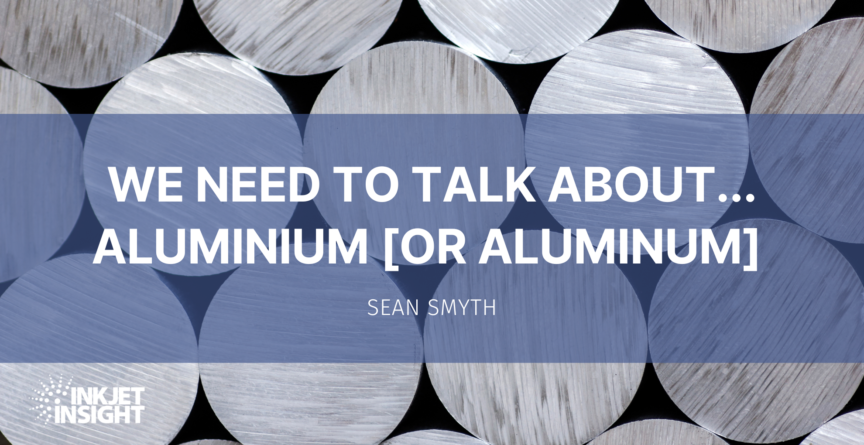Mark Twain was very good with words. He once defined a gold mine as: “A hole in the ground, with a liar at the top.” Now, I don’t know how he would characterise environmental lobbyists today, but I suspect there would be a similar wry sentiment about some of their pronouncements. Certainly when they opine about the impacts of print and packaging.
It is not easy to compare the relative environmental impact of different print processes. There are wildly different viewpoints from equipment, ink and press suppliers about the merits of their technology because they all realise the importance of sustainability to their future business prospects. So they highlight their advantages and are not so forthcoming about the drawbacks.
It is not just the chosen production process that determines environmental impacts. Graphic design, print substrate, production location, ink type, finishing and the despatch methods of a job will influence the result, along with the shift patterns and press utilisation in a printshop. There are; however, some elements that can be compared and characterised when considering analogue methods or inkjet. Digital printing does not involve a physical master, either a cylinder or set of plates that are necessary for offset, flexo or gravure printing. And this is a real issue for the analogue processes because of the environmental burden generated by plates.
At a recent Intergraf event on commercial printing, Jannick Schmidt, from Danish organisation 2.0 LCA Consultants, presented the results of a life cycle analysis of sheetfed offset commercial printing. The study identified woodfree coated paper as the biggest contributor to damaging carbon dioxide emissions, although recycling the paper can significantly offset the impact. This was followed by the printing plates and the power needed to drive the press and dry the job.
Which activity give the largest impact?

Eliminating plates from this scenario lowers the impact considerably. There are various studies that show digital printing performs better on a sustainability measure for certain factors, but these usually do not cover all the impacts shown in this analysis. They tend to present the truth, but maybe not the whole truth, depending on who funds the research.
Modern inkjet presses deliver high quality print onto the same paper and board grades as offset. The actual printing processes are difficult to compare because of the wide variety of presses that can be used, with different utilisations, speeds, drying methods and ink coverages; meaning the relative impact of producing the same job can differ widely between individual processes.
The Danish study, and many others, shows that inkjet printing can offer significant advantages against offset in sustainability terms. Litho presses use fountain solutions to make non-image areas ink repellent. Many fountain solutions contain isopropyl alcohol and there are blanket and press wash chemicals that add to the use of solvents in the pressroom. There will usually be faster make-ready and lower set-up waste (in some cases zero) with inkjet, and customers’ ability to order only what they need helps reduce subsequent redundancy throughout the supply chain.
Offset is improving in these areas with high levels of automation and process-free plates, like the Kodak Sonara, the Superia from Fujifilm, or Agfa’s Eclipse. The growth of web-to-print production allows greater efficiency in offset production when printers batch multiple jobs together on a large format press to share make-readies. However, the laws of print mean every colour of every page/image/label or pack has to be imaged onto a plate. A B1 8-page, 0.4mm calliper plate comprises about 860g (1.9 pounds) of high quality aluminium.
Greater automation means that offset printers can run more unique jobs per day. This also means that offset presses go through a lot of plates. Even though most plates are recycled this is problematic for a number of reasons.
All the main plate suppliers have had to apply surcharges as their costs for base aluminium, energy and distribution have rocketed. But it is the environmental impact of mining, transport, refining (or recycling) aluminium that is increasingly being identified as a problem.
According to Jeff Zellmer, Vice President of Global Sales & Strategy at Eastman Kodak Company, “The raw cost of aluminum used to be the primary cost when making a plate, but now with the expense of energy and logistics rising to higher levels continuously, the actual cost of the aluminum makes up less than 50% of the total cost.” Mining bauxite is not an environmentally friendly process, by any measure. After it is extracted, the ore must be refined, crushed and transported to the smelter incurring a lot of sea and rail miles.
Aluminium smelting is a high-temperature, electrolytic, chemical reaction, consisting of a flow process on molten cryolite at 950ºC (1752º F.) This separates pure aluminium from the oxide ore, that is then tapped off to form ingots which are subsequently rolled. All this has the impact of releasing a lot of carbon dioxide into the atmosphere, and also fluorides should the pollution control systems fail.
Manufacturing aluminium requires huge amounts of energy. About 17,000 kilowatt hours of electricity are required to produce one tonne of aluminium. According to the International Aluminium Institute, the CO2 emissions vary between four tonnes CO2e/t of aluminium using renewable hydropower-based electricity to more than 20 tonnes CO2e/t of aluminium when using coal power-based electricity. China is world’s largest aluminium producer, much using coal, gas or oil powered electricity rather than renewables. To put this in perspective, Zellmer cited one aluminum supplier in Germany that used 2.5 times more energy than the entire city of Dusselforf. Dusseldorf has a population of approximately 638,000.
Recycling aluminium uses 95% less energy than producing aluminium from raw materials, but there is also collection, sorting and transport to consider. On average, recycling aluminium emits 0.5 tonne CO2e/t of aluminium so it is much better, but still detrimental.
In 2021, Canada produced some 3.1 million tonnes of aluminium, three and a half times more than the 880k tonnes produced by the United States or Iceland individually. Norway is the biggest European manufacturer, making 1.33 million tonnes. This is largely due to the availability of renewable energy in these countries, hydro-power in Canada and Norway with some geothermal in Iceland that reduces the cost and CO2 emissions.
Additional energy is consumed in rolling out the metal to the desired thickness before graining, coating and cutting to size to make offset plates. Plates are transported to distribution centres and from there to the printer. Then there will be exposure in a CTP unit, with yet more chemicals and energy if the plate has to be processed, consuming a lot of water. Not a pretty picture, even for the “chemistry free” plates.
Even as the aluminium price on the metal exchange has moderated, few printers have seen plate prices fall because there are supply shortages. Some refiners have halted production in the light of the energy price rises. As printing companies and print buyers respond to the demand from end consumers to minimise their environmental performance, inkjet can provide advantages.
This could be a strategic advantage as capital allocation is moving to favour environmentally sustainable projects with many fund managers evaluating the impacts of potential investments. It is not all plain sailing for inkjet of course. The print has to be dried and this can be energy intensive as press speeds increase and water-based inks are used. Some water may be absorbed into paper or board but some has to be removed and the latent heat of evaporation of water is a physical law demanding energy that has to be overcome.
What is needed is a balanced, truthful and rigorous scientific study that determines the reality of comparing inkjet and analogue print, not a greenwashing exercise. The good news is that there are now suppliers providing both inkjet and offset technology rather than just from one side of the divide who are commissioning independent, peer reviewed studies that will allow informed decision. When Kodak, the largest supplier of process-free offset printing plates in the U.S., expresses concern about the environmental impact of aluminum it is past time to take the problem seriously. And that will be to the world’s benefit.

